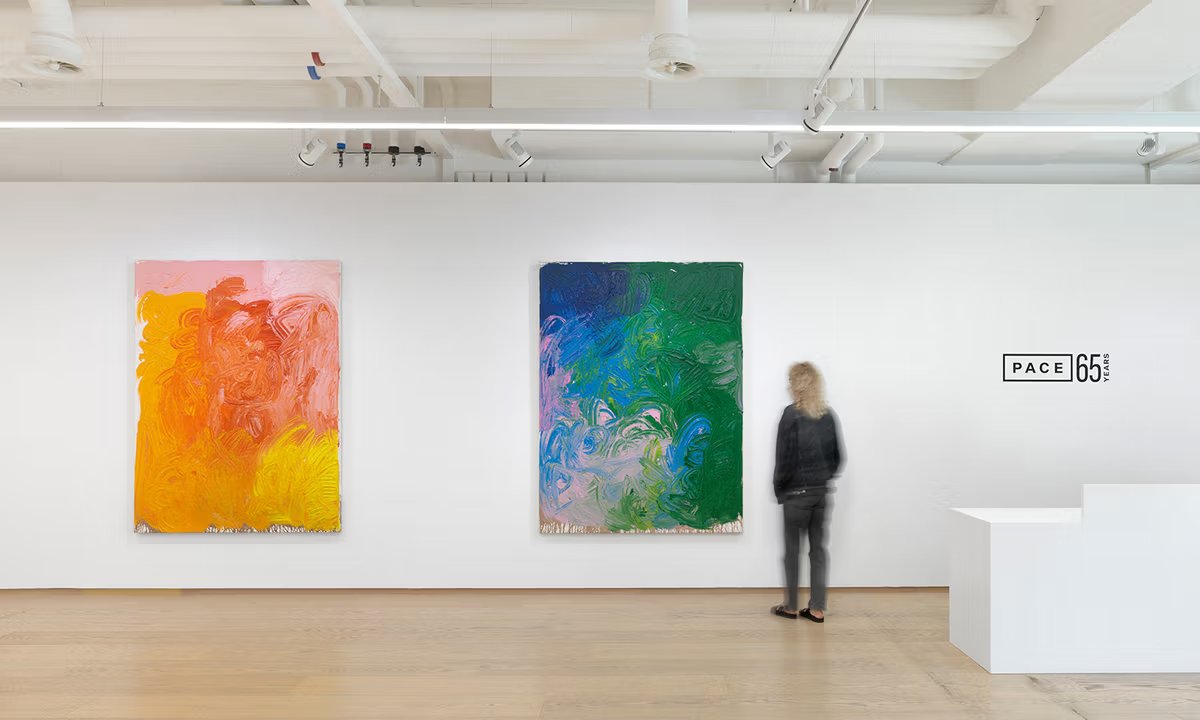
Looking at recent headlines, you could be excused for thinking the traditional dealer model is falling apart. Look a bit deeper, however, and New York galleries are alive with exhibitions commemorating anniversaries of a decade or more in business. The trend offers a heartening counterpoint to the earthquake afflicting the sector this year.
Pace Gallery has been hosting a series of exhibitions tied to its 65th birthday this year, most recently a group show in Geneva titled Pace: 65 Years (until 7 November). Arguably more encouraging than the longevity of that multicontinental empire are the milestone exhibitions by smaller galleries now based in a single city, if not a single space. Sperone Westwater on the Bowery rang in its 50th year with a show that opened on 5 September, as did Hal Bromm, whose group exhibition 50: The View From Tribeca runs until 29 November. Further uptown, the co-founders of the Chelsea dealership Albertz Benda have curated ten: an anniversary (until 18 October) to cap their tenth jubilee.
Downturn vets
Established midway on the timeline between these galleries are three other veterans who have weathered market turbulence more than once. Jane Lombard, who launched her eponymous gallery in 1995, is showing 30 x 30: A Selection of Thirty Artists Over Thirty Years, until 25 October.
Over email, Lombard calls the industry’s recent tremors a “natural” part of its ongoing evolution, adding as an example: “A major fair cancels, and the headlines echo it for weeks, but often what’s happening is a period of reflection and recalibration. That can be healthy.”
Seconding these sentiments is Yancey Richardson, whose group show commemorating her photography- and film-centric gallery’s third decade closed on 15 August. “There has always been a continual cycle of galleries closing while new galleries arrive on the scene with fresh energy,” she says.
Headquartered only a block away from Lombard’s gallery, James Cohan is still reflecting on a quarter-century of his own gallery a few months after closing the corresponding anniversary show in late July. “We live so much in the present because you’re only as good as your next exhibition and the next sale, but understanding both the successes and the failures is a valuable experience,” he says.
Lessons learned
Cohan’s endurance has beaten at least one early prediction; in 1982, he was fired from his first gallery job after ten weeks. “I was told I probably didn’t belong in the art world,” he says, chuckling. But years of subsequent work for the dealers John Weber and Paula Cooper changed his trajectory. One crucial point he gleaned from his time with these figures was the value of cementing his perspective on the primacy of serving artists above everyone—including collectors.
“You’ve made the choice to represent or show that artist, but it’s their ass that’s on the line. It’s incredibly vulnerable for them,” Cohan says. “When you appreciate that, your value systems are in the right place.”
Asked for the most important lesson from her 30 years in business, Richardson points to learning to trust her gut instincts when considering new artists. The few times she’s been “swayed by other voices” to ignore her reservations, it has been “a disappointment, if not a downright disaster”. Conversely, when she has allowed her excitement about an artist to overrule what appeared to be long odds of success, the return on her gambles have proven “extraordinary”.
More than the marketplace
According to Lombard, her gallery’s adaptability has come partly from working with artists grappling with grave political realities. These include Dan Perjovschi, who navigated repression under Communism in Romania, and Via Lewandowsky, who escaped East Germany. Their stories inspire her “to keep going, evolving and continue sustaining a gallery that gives space to voices that matter”.
Also aiding the business’s growth has been the gradual evolution of Lombard’s approach to team-building. “In those early days, roles within galleries were far less defined and everyone did a bit of everything,” she says. But her operation has become “more structured” over time while still “maintaining a spirit of collaboration”.
One last consideration for longevity: validation of, and sales to, museums. Cohan calls institutional support the gallery’s “gold standard”—because they take the long view of art history, and their endowments commit them to acquiring art no matter the market cycle. “There’s a lot of noise out in the world, but the fundamentals of our business march on,” he says.








